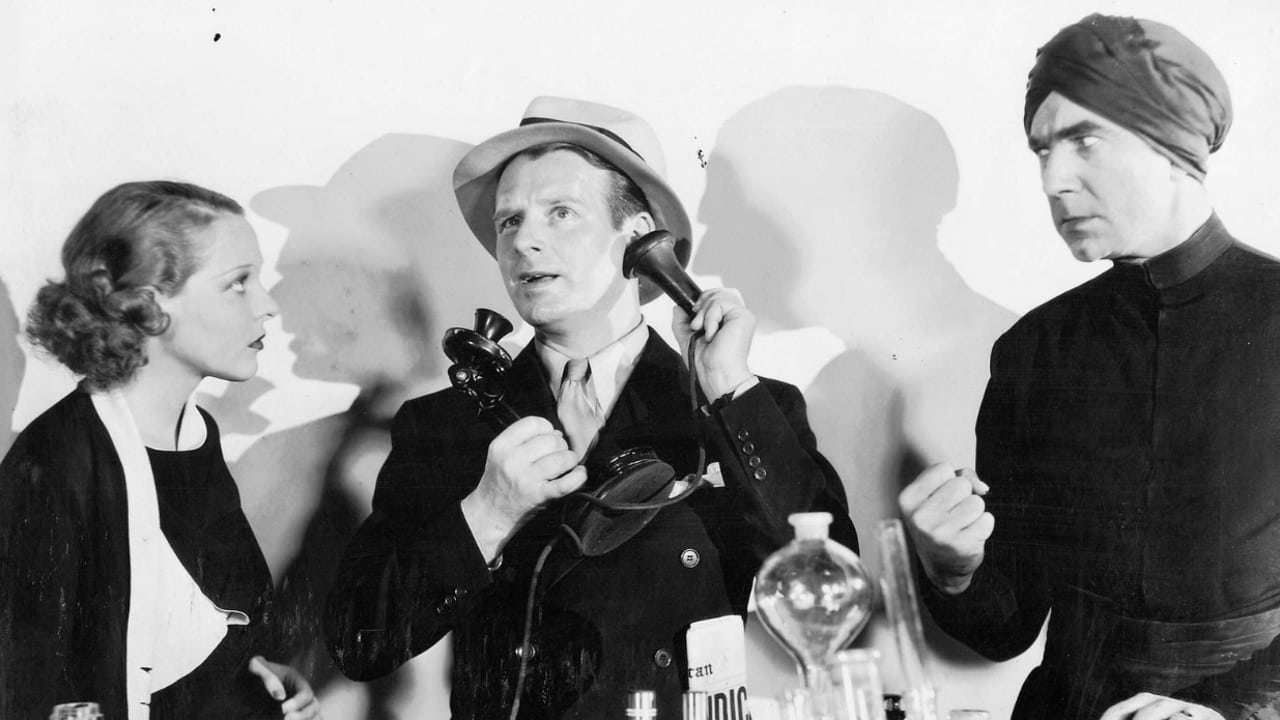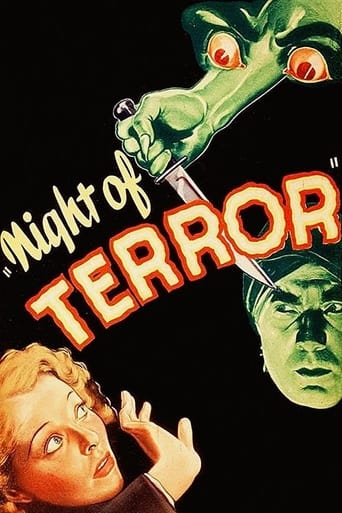

NIGHT OF TERROR is an early entry in the creaky 'old dark house' genre which was all the rage in the 1930s. It has all of the right ingredients in pretty much the right order, and at just an hour in length it doesn't drag on too much. A familial home is the setting for a night of murders and mysterious disappearances as the police struggle to investigate. You get mad scientists, a maniac killer prowling the countryside and knifing his victims, a mystic, comedy relief from a frightened black servant, a shifty servant, secret passages, plotting, hidden motives, and gloomy old locales. Bela Lugosi headlines the production, riding high on the big success of DRACULA, and is fantastically creepy. The rest is dated but nonetheless a lot of fun.
... View More1933's "Night of Terror" is distinguished by the top billed presence of Bela Lugosi, plus its status as the very first bona-fide horror film from Columbia Pictures, part of the SON OF SHOCK television package that enjoyed widespread success in the late 50s. Perhaps this is the reason why so many disparate elements get shoehorned into the film; an old dark house setting, a prowling maniac who has already claimed an impressive 12 victims, a scientist who creates a serum that will suspend life, intending to have himself be buried alive to prove its effectiveness. Like "Doctor X," there is the presence of an obnoxious reporter, but in the casting of Wallace Ford he is slightly more likable. The leading lady is Sally Blane, lovely older sister of Loretta Young, quite the best thing to see, as Lugosi is given precious little to do as skulking Hindu servant Degar, who at least is involved in the climax, as in the 1939 "The Gorilla." Bela would soon work with Loretta Young herself in "The Devil's in Love," and with elder sister Polly Ann Young in 1941's "Invisible Ghost" (he would be plagued by Wallace Ford at Monogram, in 1935's "The Mysterious Mr. Wong" and 1943's "The Ape Man"). The role of the Maniac is credited to Edwin Maxwell, who destroyed Lionel Atwill's masterworks in the earlier "Mystery of the Wax Museum," and it is clearly his voice we hear in the final scene, regardless of whether he was doubled or not (Dave O'Brien plays the first on screen victim). "Night of Terror" made two appearances on Pittsburgh's Chiller Theater, Jan 8 1966 (following the 1933 classic "The Invisible Man"), and Aug 3 1968 (following the 1966 British "Invasion").
... View MoreThis film has a special interest to me because it was the only one with my grandmother, Mary Frey, on screen. It has all of the usual old spooky house elements with lots of screams and surprises. Along with this there are the stock incompetent police, and elements of classic farce. But I think the director had some fun with these elements. Check out the scenes with the grinning skeleton. With all of the special effects now available we can't take this film seriously, but we can laugh at the clichés. One notable flaw is the music which does not go well with some of the scenes. It is way too upbeat when it should be communicating mystery. However, it is very soft so it is not obtrusive.The séance scene has a little history. According to my father it was filmed during an aftershock of the Long Beach earthquake. But the actors were stage professionals and kept going despite the heavy lights swaying over their heads. The director was so impressed by the intent expressions that he said it was perfect with no retakes needed.OK, the characters are one dimensional, but that is common in this genre. Lugosi has ample opportunity to use dramatic facial expressions and outbursts. Very small children may find this movie frightening. The only available copy from Sinister Cinema is a fairly good, but soft focus print.
... View MoreThis is a classic murder mystery set at a spooky old mansion. Wealthy Richard Rinehart is murdered at his posh estate. There are plenty of kooky and creepy people about who frequent the manor. Bela plays a household servant, a mystic who believes in his wife's ability to foretell the future.Wallace Ford plays the wise cracking reporter who seems one step ahead of the police. While the police believe an escaped maniac is the killer, Ford probes to learn who will benefit from Rinehart's murder.One problem I have with the film is the escaped maniac who is about and who is killing people in the area. We are told that he has already murdered 12 people. The police then announce he was last seen around the Rinehart estate. He murders a yard worker at the estate early on and then spends the rest of the film peering in windows and skulking about the estate. It is beyond reason that the maniac is not captured or that the police are not hunting madly for a man who has murdered 13 people. That said, I understand he is present as a red herring and the murderer has used the maniac's present to commit the murder.
... View More